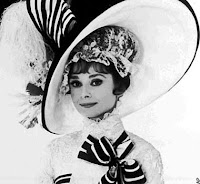| Front Cover Of a Vogue Magazine |
Cecil Beaton started his career as a society photographer in 1926 with an exhibition in London which had won him and immediate contract with Vogue, where he had worked there for thirty years. His sense of style was inspired by his biggest aspirations like E.O. Hoppe, Edward Steichen and Baron de Mayer, in which they were the most successful photographers of the 1910's and 20s. Beaton's fascination with the glamour and high society prevailed throughout his life and in 1937 he had became court photographer to the British Royal Family. He also became a successful syage and costume designer, most notably for 'My Fair Lady' and 'Gigi'.

To what degree should the image be manipulated to go into a fashion magazine?
Fashion, fashion, fashion!. This appeals to us especially when it comes to fashion photography in magazines. They appeal to us because they are glossy and include attractive images and of "usually" of attractive people (or famous ones). They are also very competitive because they would want you to notice them and to pick and read the magazine, in which it will intend in you to buying them at the end, once you have seen it thoughtfully. But,there is also a slight catch which is that more often than not, images have been altered historically with painstaking tricks of lighting and exposure and, more recently, with retouching software that can make celebrities and models look thinner, taller, unblemished, with brighter eyes and whiter teeth. Seemingly perfect. Advances in digital photography have made it so easy to manipulate photographs that cover models often resemble weirdly synthesized creatures.

Retouching fashion photographs to make the models appear better looking isn't anything new. The ethics of modifying photos of Hollywood actresses has been debated since the 1930s, when Hollywood photographers manipulated images to make the women appear more glamorous, according to the 2009 article, "Smile and Say 'No Photoshop,'" by Eric Wilson, which was published in "The New York Times." There are various ways of retouching or manipulating fashion images. Most touch-ups are done to improve the look of the model or to enhance sales of the product being advertised. With a variety of retouching software available, it's common for fashion photographers to manipulate photos using computer technology. This allows a photographer to make a model appear thinner, enhance her eye color or remove excess skin from her chin or cheeks, according to "Photojournalism: An Ethical Approach," by Paul Martin Lester.
- Most fashion photographers are very good at using lighting to change the appearance of an image or photograph. Natural light, incandescent light and even brightly colored lights can be used as manipulation tools. For example, when a greenish light is used in darkness, the person being photographed appears mysterious and spooky, according to the article, "Light and Color in Photography," published on Photography.com. Adjusting the direction of the lighting used on a model can create shadows or dark spaces. Air brushing is commonly used by fashion photographers, according to the article, "Air Brushing," published by Photography.com. Imperfections, such as scars, bruises or acne, can be removed by air brushing the image, making it look smooth and flawless. Although most air brushing is now done digitally, the original air-brushing technique of spraying paint onto a photo using compressed air has been used for decades to modify photos. By adding special effects, such as a fire in the distance or neon lights overhead, a photographer is able to catch a reader's attention, according to the article, "140+ Learn Awesome Photoshop Effects," published by "Tripwire Magazine" in 2011. These effects convey a sense of depth and emotion, engaging viewers and enabling the photograph to be more exciting or attention-grabbing.
Unit 57.1 Grade Distinction:
ReplyDeleteYou have critically evaluated the main photographic applications, contexts and the associated techniques in relation to past and contemporary photographic practice. You have fully justified the points you made, you developed ideas critically (that is, compare, assess and discriminate) and drawn out of an example precisely what it is about it that exemplifies the point it illustrates. This is a very good piece of academic writing, well done.